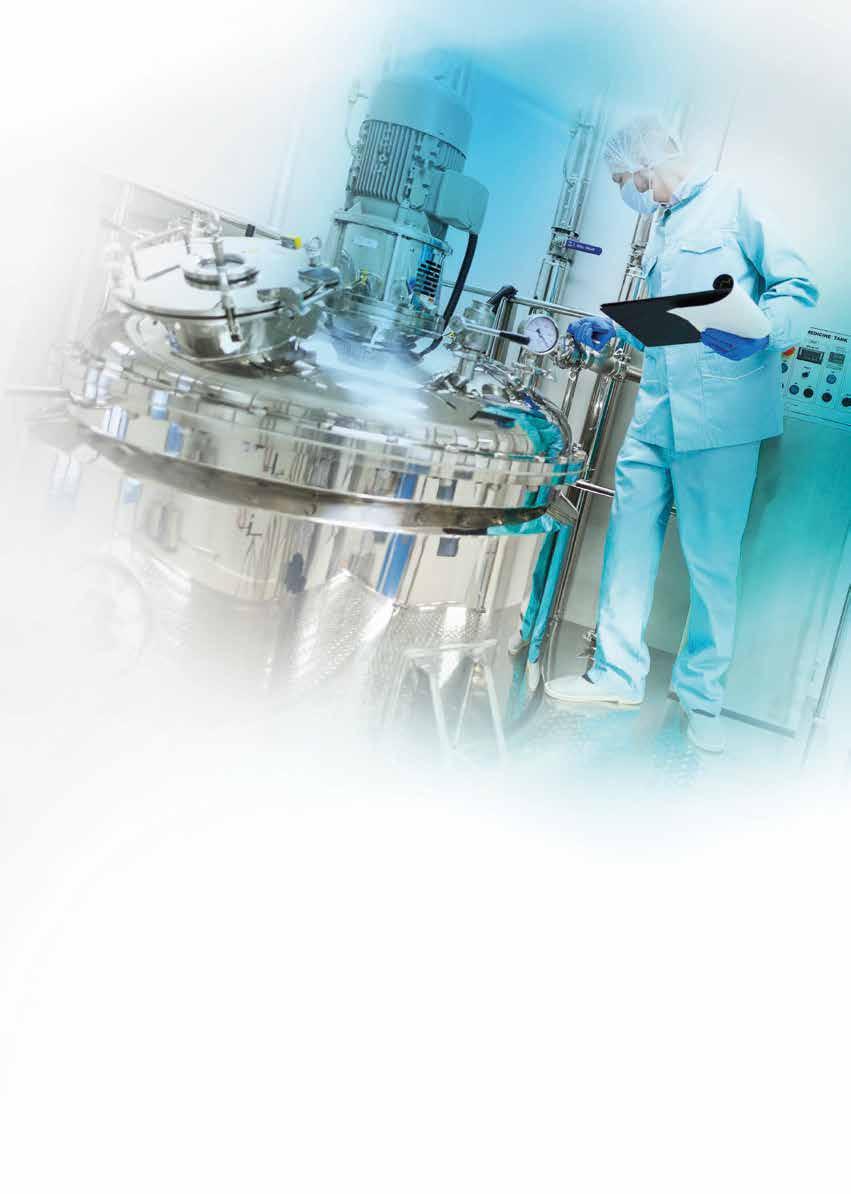
5 minute read
Part 3: When knowledge meets know-how
Tom Boswell Product Manager, Engineering & Reliability
MAKING ONLINE MONITORING PART OF YOUR MAINTENANCE STRATEGY
Advertisement
Part 3: When knowledge meets know-how
Over the past two issues of Know+How, we have been considering methods you can use to monitor and maintain your assets, and to achieve the key goals of any business: reduced maintenance costs, increased uptime, optimised efficiency and maximised productivity. We have also looked at how an holistic view of the data gathered will help you make more sense of – and better use of – all of it. Now, in this final part of the story, we are looking at how the information you want can provide the knowledge you need. And how know-how can turn that knowledge into the power to improve your operations.
Though monitoring ultimately delivers the benefits described above, it is only the means to an end. Between the means and the end, there’s the stepping stone of better-planned maintenance.
Better-planned maintenance helps to reduce the risk of unplanned failure. Facilitating better-planned maintenance requires monitoring. And what is the most effective monitoring method you can use? Sensors. While an engineer’s inspections can only provide snapshots of data, a sensor can gather data almost continually, sweeping-up information at intervals of 60 - 600 seconds. This frequency means that, instead of snapshots, you have the data equivalent of a panoramic photograph, seamlessly stitched together from multiple images. The overall effect is a widescreen view that’s as close as possible to capturing the whole picture at once.
Mounting sensors on maintainable items such as motors, gearboxes and pumps will provide data on how the process is affecting the asset condition. When this is assessed in the light of historical data from the same items, it does two things.
The data equivalent of a panoramic photograph


Firstly, it depicts a trend. Secondly, when that trend is compared with known values, it makes it possible to predict when a maintenance intervention will be required. And that is when know-how can make the most of knowledge. Refuel or rethink?
In previous articles, we have frequently used the analogy of a car. It’s also a useful comparison as we consider the information we gather from sensors, and what we can do with it.
When the little dashboard petrol pump illuminates, and a warning tone alerts you that you only have enough fuel for 50 miles’ driving, you have two choices. You can fill up at the next available service station. Or you can ease off the accelerator and drive more economically – eking out the fuel you have left to cover perhaps 60 or 70 miles instead. With data from your sensors, and ERIKS know-how to guide you, it’s possible to do the same with your maintainable items.
When knowhow can make the most of knowledge
If an alert tells you, for example, that a threshold will be passed in two weeks, there may be intermediate actions you can take to increase that period to three or even four weeks. You have extended the Mean Time Between Failures, reduced downtime, reduced maintenance costs, and helped to maintain – or even improve – productivity. Where know-how counts
ERIKS’ know-how will help you, first by interpreting the data to identify the issue, then by delivering a diagnosis, and finally by providing the solution. In addition, the predictive element of this process ensures that maintenance is no longer reactive. Your ERIKS maintenance engineer will be able to schedule a date for the work required, and arrive as scheduled with the correct spares, while in the meantime you continue to operate your asset. And even if the issue identified is too complex for a quick solution, ERIKS’ have the in-house capabilities to resolve it.
Maintenance is no longer reactive
Continued...
So your maintenance parts stockholding can be reduced, your efficiency will be increased, and your peace of mind will go through the roof.

One day, sensor-gathered data will enable us – as your embedded maintenance partner – to identify issues, co-ordinate maintenance with scheduled downtime, and rectify the problem, all before you’re aware it’s happened. That fourth instalment in the maintenance strategy story isn’t quite ready to be written yet. But in the meantime, you can contact ERIKS Product Manager Tom Boswell to discover more about the operational benefits to you of online monitoring, and its aims and ambitions for the future.

Monitoring in action
Looking to avoid catastrophic production losses, one customer invested in ERIKS Digital Reliability Services, utilising state-of-the-art online monitoring through wireless sensors.
Over a period of time, a warning alarm was triggered, highlighting that the Drive End bearing of the Twiner Main Drive Motor was in a serious state of deterioration.
Utilising years of expertise, the Condition Monitoring and Vibration Analysts teams were able to remotely identify the root cause using trend data, before establishing a failure mode and implementing a corrective action plan to eliminate that specific failure mode. It was discovered that the Drive End bearing had been previously changed out to a roller bearing, rather than the correct deep groove ball bearing, while other areas such as severe contamination and damage to the windings and commutator were also highlighted. The current assembly was an open roller bearing with no way to seal from contamination. However, there was enough room on the Drive End shaft for extension, so drawing upon decades of engineering know-how, the team re-engineered, manufactured and fitted a new Drive End backplate that would house a ‘lip seal’ to help protect against contamination, while an additional nylon ‘thrower’ would provide greater resistance.
Investment in ERIKS Digital Reliability Services provided the customer with an early indication to an issue that otherwise would have remained undetected. The customer can now better manage any risks to production, as well as increasing health and safety for engineers, and significantly improving financial savings as proactive repairs are much more cost efficient than repair or replacement after run-to-failure.












